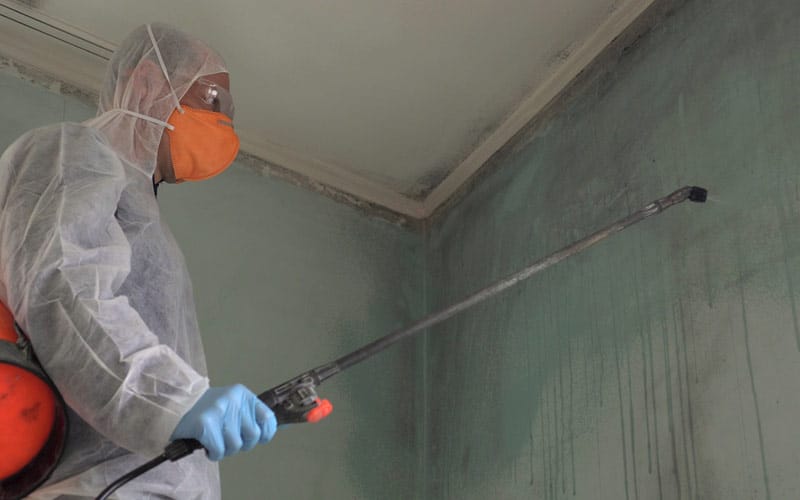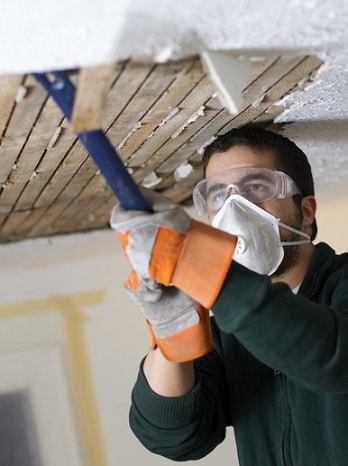Which is More Effective, Vinegar or Bleach to Kill Mold?
Table of Contents show
At Action 1 Restoration, our company is committed to helping homeowners recover from flooding in their homes. While many of these properties have straight-forward cleanups, others require more care because mold is present. In situations like these, it’s crucial to kill the mold in addition to taking the normal steps that are required for successful restoration. While this means more time and work, it’s essential for creating a safer home that doesn’t put homeowners and their families at risk for mold-related illnesses.
Is Your Home at Risk for Mold?
FEMA estimates that mold will appear inside of a home that has been damaged by water within 24-48 hours. This is why homeowners must act fast and have their homes dried as soon as possible. However, we know this isn’t always possible for homeowners who are dealing with inclement weather or surprise leaks. In these situations, it’s likely that mold will already be present and potentially growing in several different parts of the home.

If you’ve had water that has been in your home for more than a few days, mold has likely started growing. It’s easy to identify this by looking for fuzzy black or brown dots on your floors, walls, or even furniture. However, mold can also be hidden underneath floorboards, behind walls, and on top of the ceiling, making it difficult to spot. This is why mold removal is crucial if you’ve recently had any degree of water damage in your home.
Where Can Mold Grow?
 Mold thrives in environments that are humid, warm, and wet. These are the qualities that make a recently flooded home, which is filled with standing water, the perfect grounds for mold growth. Unfortunately, this is also why mold can grow just about anywhere in your home that water has touched. This includes basements, attics, and other hidden and difficult-to-reach spaces. Mold can even grow on the foundation of your home if water has flooded outside and seeped into the ground around the base of your house.
Mold thrives in environments that are humid, warm, and wet. These are the qualities that make a recently flooded home, which is filled with standing water, the perfect grounds for mold growth. Unfortunately, this is also why mold can grow just about anywhere in your home that water has touched. This includes basements, attics, and other hidden and difficult-to-reach spaces. Mold can even grow on the foundation of your home if water has flooded outside and seeped into the ground around the base of your house.Why is Mold Dangerous?
When mold grows inside of a home with water damage, it will destroy drywall, wood, and any other materials that it’s growing on. If it’s not taken care of, mold will continue to destroy these materials and eventually weaken the structure of a home. Making mold even more dangerous is the fact that it can negatively impact the health of your family by causing mold asthma and other allergic reactions. Breathing in the spores of mold will continue to worsen your health over time, which is why we never recommend living in a home with active mold growth.
Bleach vs Vinegar to Kill Mold
When it comes to killing mold, vinegar and bleach are some of the most common solutions that are used. With both being easy to find, homeowners can quickly buy them to tackle the mold in their homes as soon as possible. While some individuals prefer using one over the other, most just want to use the solution that works the best. While both can have a place in a clean home, when it comes to killing mold we recommend using vinegar.
What’s unique about vinegar in relation to mold removal is the fact that it can kill mold at the base by penetrating through porous materials. This is different from bleach, which will only kill surface mold and will not penetrate through the materials that have been affected. This means vinegar will ultimately kill the growth at the root, which is crucial for fully eliminating mold. If you only clean the surface, then the mold will eventually return in days or weeks and you’ll be right back where you started.
According to the EPA, bleach should not be used during mold cleanup because mold spores will remain in the pores of the impacted material. They also urge homeowners to practice safe cleanup practices by not mixing bleach with other cleaning solutions, including those that contain ammonia, because these can produce fumes that are dangerous and toxic. Instead, use vinegar that will penetrate deep into the materials and get rid of mold in the most effective manner possible.
Learn about the cleanup steps by visiting the original post on Action 1 Restoration.
